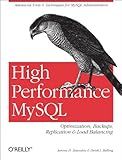Best Database Backup Solutions to Buy in January 2026
To backup a MySQL database, you can use the command-line tool mysqldump. This tool allows you to create a dump of the database's structure and data in a single file that can be easily imported back into MySQL if needed. To create a backup using mysqldump, you simply need to run the following command:
mysqldump -u [username] -p [database_name] > [backup_file.sql]
Replace [username] with your MySQL username, [database_name] with the name of the database you want to backup, and [backup_file.sql] with the name of the file where you want to store the backup.
You will be prompted to enter your MySQL password after running the command. Once you have entered the password, mysqldump will create the backup file in the current directory.
It is recommended to regularly backup your MySQL databases to protect against data loss or corruption. You can automate the backup process by scheduling regular backups using cron jobs or other scheduling tools. Additionally, you can store backups on external storage devices or in the cloud for added security.
What is the key consideration for selecting the right backup solution for a MySQL database?
One key consideration for selecting the right backup solution for a MySQL database is to ensure that the solution is efficient and reliable in terms of data integrity and recovery capabilities. This means that the backup solution should be able to perform regular backups of the database without impacting its performance, and should also have the ability to quickly and easily recover data in the event of a failure or data loss. Additionally, the backup solution should be compatible with the specific version of MySQL being used and should offer features such as encryption, compression, and the ability to schedule backups at convenient times. Overall, the backup solution should provide a balance of security, ease of use, and efficiency in order to effectively protect and recover data from the MySQL database.
What is the recommended frequency for backing up a MySQL database?
It is recommended to back up a MySQL database on a regular basis, ideally daily or weekly, depending on the frequency of changes and updates to the database. It is important to take backups regularly to ensure that you have the most up-to-date copy of your data in case of any unforeseen events or data loss.
What is the recommended encryption algorithm for MySQL database backups?
The recommended encryption algorithm for MySQL database backups is AES (Advanced Encryption Standard). It is a widely used symmetric encryption algorithm that provides strong security and performance for protecting sensitive data.MySQL provides built-in encryption functions like AES_ENCRYPT and AES_DECRYPT to encrypt and decrypt data. Additionally, you can use third-party tools or software to encrypt the entire backup files using AES encryption before storing them in a secure location.
What is the cost of implementing a backup strategy for a MySQL database?
The cost of implementing a backup strategy for a MySQL database can vary depending on the specific needs and requirements of the organization. Some factors that can impact the cost include:
- Backup solution: The cost of the backup software or service that is used to create and manage backups of the MySQL database.
- Storage: The cost of storing backup data, either on-premise or in the cloud. Cloud storage providers typically charge based on the amount of data stored and the frequency of backups.
- Resources: The cost of hardware, such as additional servers or storage devices, and personnel required to implement and maintain the backup strategy.
- Licensing: If using commercial backup software, licensing fees may apply based on the number of servers or instances being backed up.
Overall, the cost of implementing a backup strategy for a MySQL database can range from a few hundred dollars to several thousand dollars per year, depending on the scale and complexity of the backup solution. It is important to carefully evaluate the needs of the organization and choose a backup strategy that provides an appropriate level of data protection while also being cost-effective.
How to delete old backups of a MySQL database?
To delete old backups of a MySQL database, you can follow these steps:
- Connect to your MySQL server using a client like MySQL Workbench or command-line tool.
- Identify the backups you want to delete by listing the available backups, checking their timestamps, or checking the contents of the backup files.
- Once you have identified the old backups you want to delete, use the following command to delete the backup file:
DELETE FROM <backup_table_name> WHERE timestamp < 'yyyy-mm-dd';
Replace <backup_table_name> with the name of the table where your backup records are stored, and yyyy-mm-dd with the timestamp before which you want to delete the backups.
- After running the delete command, make sure to verify that the old backups have been deleted by listing the backups again or checking the contents of the backup directory.
- It's also a good idea to run a database backup after deleting the old backups to ensure you have the most up-to-date backup available.




